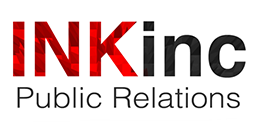
Virtually every time you see someone who is being interviewed on a major news show, you should know that the interview you see on camera is not the first interview they did. There’s another interview, done off-camera days before, that is truly what makes or breaks a TV appearance. It’s called the pre-interview. Here’s how that works.
Once your public relations person has sold a producer on the idea of a segment, and you’ve picked out a possible date and time for the segment, you must then schedule a pre-interview. The pre-interview typically happens with a segment producer for the show you’re going to be on. That’s the person responsible for gathering the information and insights that the anchor will need in order to conduct the on-camera interview. Generally, these conversations happen over the phone a couple days before the segment is scheduled to happen.
There are three key goals in any TV pre-interview
PRE-INTERVIEW
The producer wants to know that you are capable of talking coherently on TV. Until this point, the producer may have never seen or heard you speak. So a huge part of the pre-interview is for them to ask you questions similar to what you’d be asked on camera, and gauge how succinctly and clearly you can answer them. If you stammer or stumble or take three minutes to answer one question, that’s a red flag.

VISUALS
The producer wants to gather elements for the segment. If you’ve ever watched a CNBC interview, sometimes they’ll show graphics on the screen that list some of the key points an interviewee is saying as the interview happens. This isn’t magic. CNBC doesn’t read minds. This happens because the producer gathered the main talking points from the guest during the pre-interview.

DON’T BE A PAIN
The producer wants to make sure you’re not a pain. Seriously. If it takes five emails, two missed phone calls, and three reschedulings in order to conduct the pre-interview, the producer will know that you’re a handful. This may not impact the segment you’re currently working with them on, but it can definitely impact whether you get asked back on TV in the future.

So, how can you nail your pre-interview?
First, be flexible. Be available. Be on time.
Second, understand that the purpose of the pre-interview is not solely to get all of your marketing messages out. The purpose is to help a producer create a compelling TV segment. Listen closely, answer thoughtfully, and try to keep it quick.
Third, be nice. The producer you are talking to is scheduling multiple segments all the time. They will forget your name. They will only partially understand what your company does. Don’t get frustrated. Do all these things and the secret interview you do off camera can lead to much better interviews on camera.
If you’re not comfortable on camera and don’t feel like you’re ready for prime time, INK can help. Check out our Media Training services page to learn more about our personalized media training sessions hosted by an award-winning former journalist himself—me!
